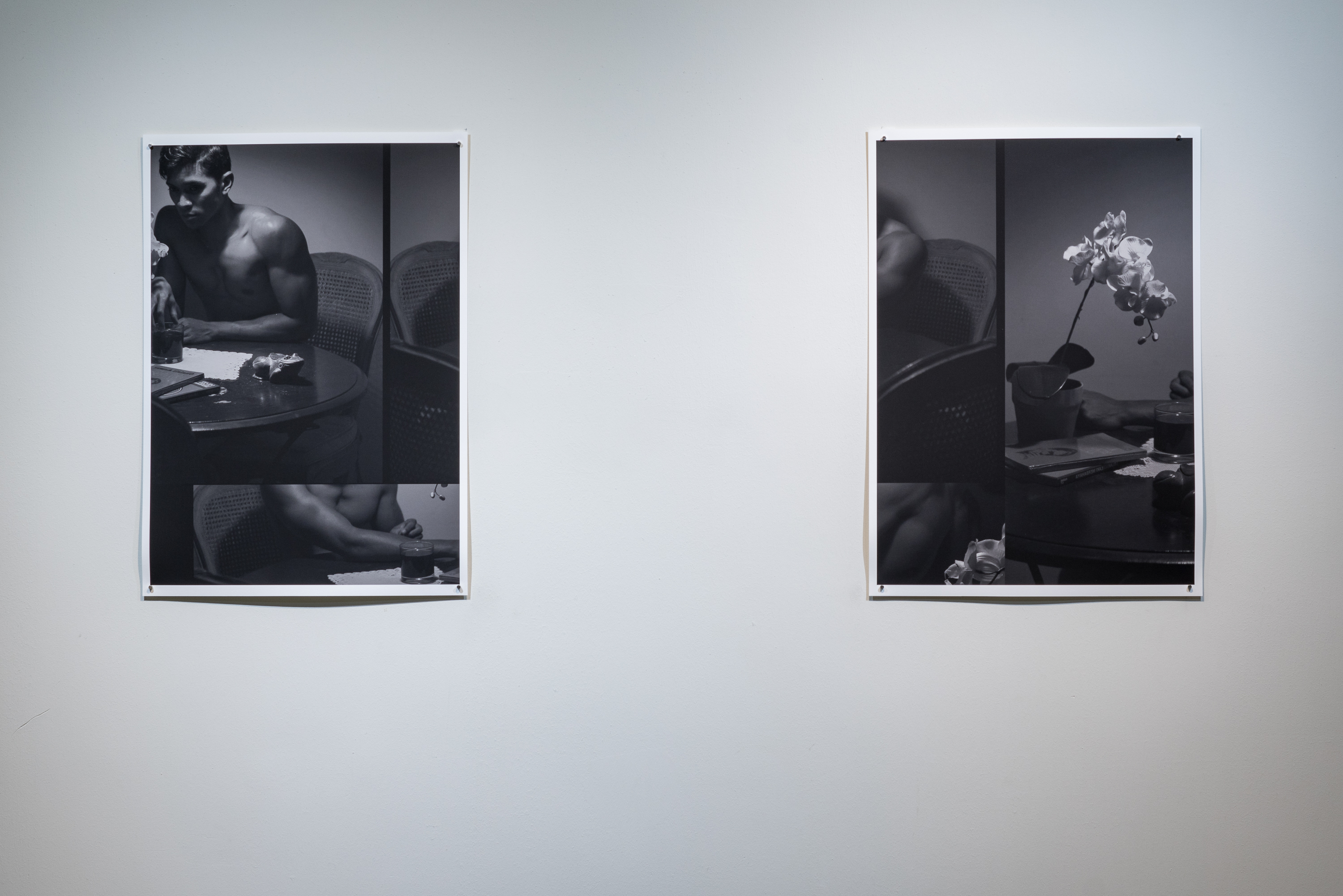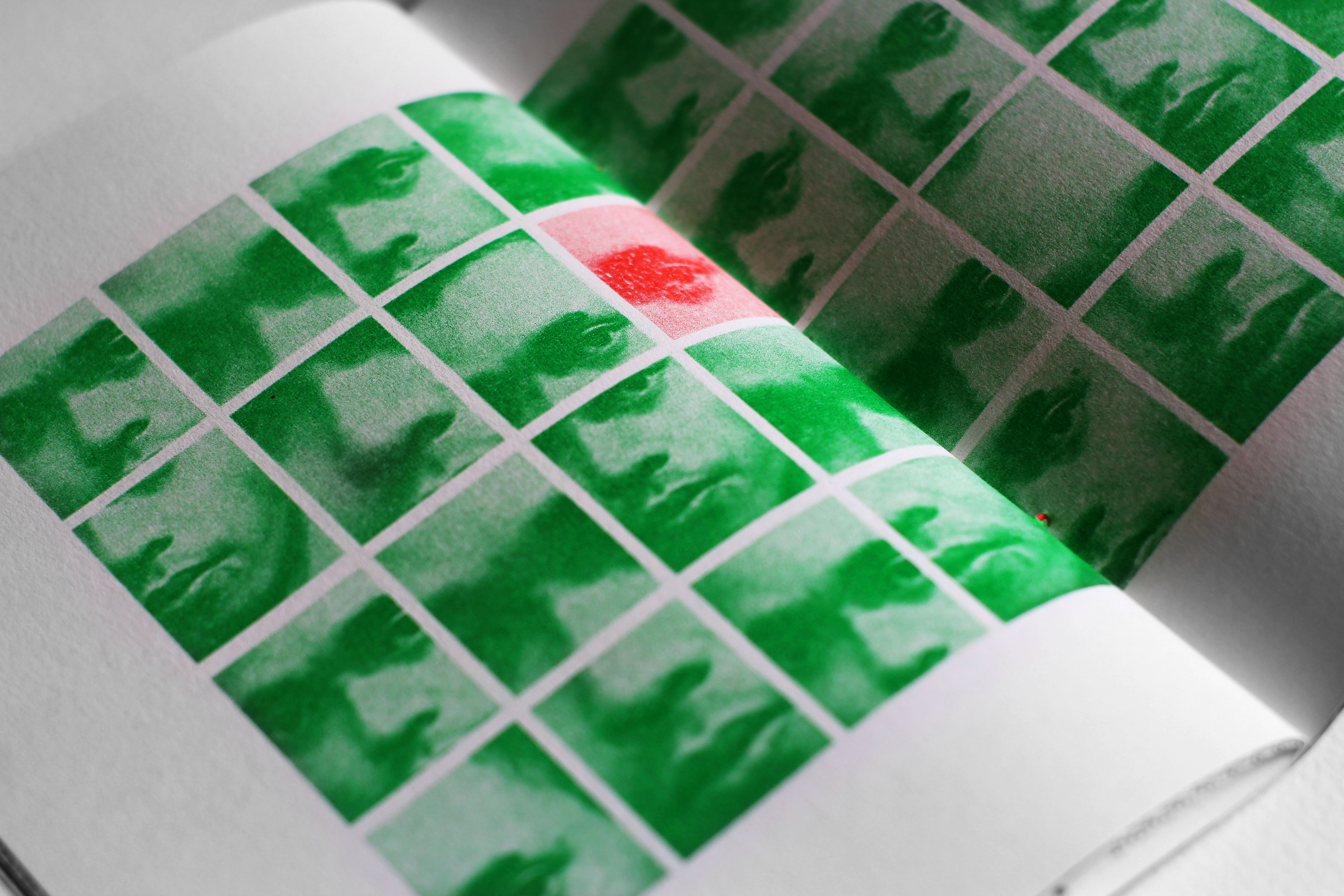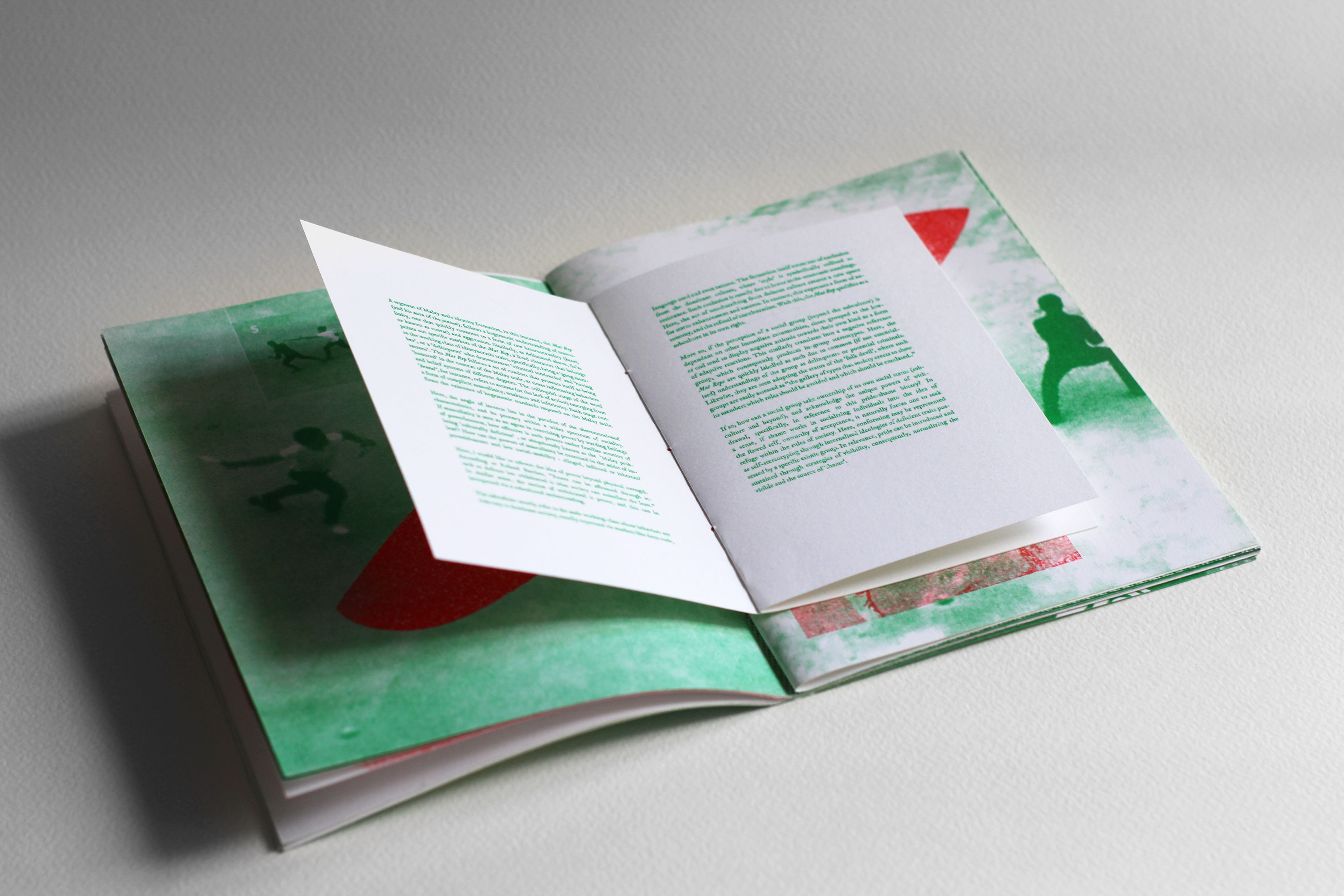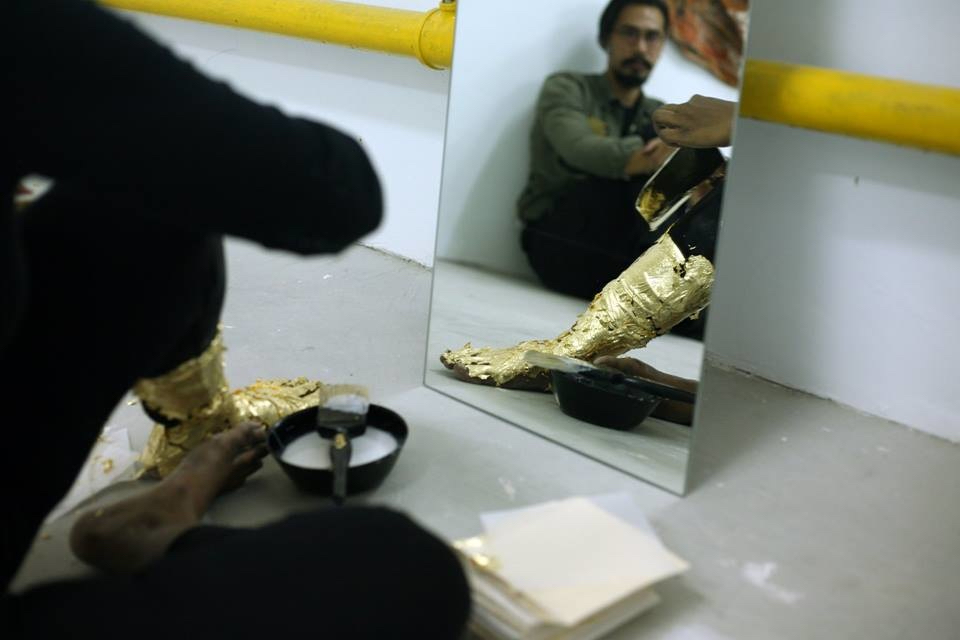A collection of conversations with a diverse range of local and regional creatives
Library Conversations for SGABF2020
We examined the systems that support art book making and independent art book publishing in Singapore and the region.
A Closer Look for SGABF2019
We gathered perspectives on our zine and art book culture, and discuss the possibilities of self-publishing today.
21 Creatives for SGABF2018
We sat down with 21 creatives of various disciplines to learn about their practice and asked each of them to fill up a blank page in a notebook.
ZULKHAIRI ZULKIFLEE

Photo Credit: SGABF
SGABF: Hi Zul, firstly can you tell us more about your practice and how it has developed over the years?
ZULKHAIRI ZULKIFLEE (ZZ): My practice revolves around Malayness. In the recent years, I’ve been toying with the idea of revolving. We seem to place identity as a central aspect, and we’re all going in that direction. I find myself coming to a point of self-perpetuation where I don’t want to be talking about myself. When faced in this situation, I find that people have a difficult time entering the scenario.
Being Asians who are educated based on Western values, we don’t seem to have an issue understanding concepts or ideologies from these places. The contradiction lies in how people struggle to grasp the idea of Malayness. I’m not sure if I’m keen to define what makes anyone Malay which is also a long drawn conversation, rather than what ‘Malay’ can become. How can the Malay identity create space for other self-differentiating identities to enter?
The act of making space can be seen as a move taken when you may not understand where someone is coming from or what they are talking about. You make space to understand instead of passing judgement. I want to look at Malayness as creating a space for Malay people who may not identify with essential traits and at the same time exploring how other races may seek affinities with certain Malay attributes. That’s where the idea of knowledge production, social agency, distinction and taste come in.

Photo Credit: Courtesy of Artist
As an artist, I’m thinking of ways to communicate certain ideas from a visual standpoint. I’m not a cultural theorist nor a sociologist but I do borrow information from these fields to create a language that may bridge certain forms of understanding – especially when I’m working with dense text. How can we open up Malayness? It’s important to consider the works of other practitioners as well. I see the entire landscape as a form of collaboration where we should be listening instead of working in a silo. I have to be very attuned to other artists who are also working around the subject of Malayness. Sure, the works and ways of communication might be different but that’s what contributes to a dialogue. It should never be a monologue.

Photo Credit: Courtesy of Artist
Since we all have different worldviews, making sure that everyone can find affinities to an extent reduces the level of didacticism. That’s something I’ve been wanting to manifest with my own practice.
SGABF: Are you specifically working within the context of Singapore or are you also looking outwards to examine what Malayness means in other regions?
ZZ: When we speak about Malayness, we’re also thinking of the Nusantara (‘archipelago’) – the different Malay identities. People today are seeking their ethnic roots. We’re not just Malay – you could be Boyanese or Javanese, for example.
It’s strange because I’m Javanese but I don’t know anyone in Java. Perhaps if I looked deeper I might find someone with a connection. How can we speak of the Malay identity in the current times? How can I navigate through the everyday life, or as a Malay artist? I’m concerned with bringing the depths of my identity to the forefront, especially in a landscape where there are various majority groups. There’s also the process of understanding where your identity stands on a geographical scale. What happens if I ever step out of Singapore to pursue the arts? Will my work be less relevant?
SGABF: How did you come to create your art zine, Pisau dan Timun (Knife and Cucumber)? Are you ever concerned by the shifts in context as the zine travels to places such as New York and Chicago, in a country that’s so polarised?

Photo Credit: Courtesy of Artist
ZZ: The zine was created from an open call by local risograph press, Knuckles & Notch. They eventually brought the zine to New York Art Book Fair, and it was there that the School of the Art Institute of Chicago purchased a copy and catalogued it in their library.
My approach of making the zine stemmed from a desire to look at mat reps (a group regularly seen as delinquents). At that point in time, I wondered why wasn’t anyone seeing them as a subcultural movement or group. Why were their idiosyncrasies not celebrated? We are familiar with more obvious groups like the punks and skinheads but I was particularly interested in the possibilities of a subculture that exists on a day to day. Readers in the States had no issues referring to the subject matter as a subcultural group.

Photo Credit: Courtesy of Artist
More importantly, the zine was a creative outlet for me. The images were all taken from the Internet, and rearranged from a visual standpoint of communicating the idea of a marginalised or subcultural group. At the same time, I had to be aware that I couldn’t just use these terms loosely. That’s why it’s important to seek affinities from worldviews. I may be creating something with an impetus of talking about a Malay working class, but a person of a different background may find other meanings or interests within it.
There might be some subcultural interests that perhaps vary from my intention but it makes the work more resistant to closure. I’ve become very open to accepting that side of art making and consumption.
SGABF: Are people necessarily sensitive to local subcultures, in terms of identifying them?
ZZ: If we’re talking about mat reps, it seems that some people don’t really know it exists. It depends on your class or background, perhaps even the school that you went to. I can pick out another Singaporean who’s not Malay and ask them about mat reps. There’s a chance someone might find the term familiar but can’t be entirely sure or even not know it at all.
SGABF: Can these expressions and examinations be made more accessible, and how necessary is it to do so?
ZZ: Well, first of all, I don’t identify as a mat rep. So I don’t see my work as an attempt to represent this group of people. They clearly don’t need it either. I just thought it was a good topic to analyse creatively. There’s no harm making these things more accessible but it’s important to remain authentic about my intentions, and acknowledge the fact that I’m creating a type of semiotic analysis as someone who doesn’t have access to this community even though I’m Malay. Can you just imagine the people who are even further away from me?
I cannot pretend to represent every single Malay household or individual in Singapore. The upper class, for example, may not reveal themselves for us to comprehend. In that sense, even if I were to create some sense of accessibility, it would just be one segment of a rather plural understanding of one group.
SGABF: How would you weigh the maturity of cultural and identity studies and examinations among our society?
Photo Credit: Courtesy of Artist
ZZ: We are definitely doing way better today. What’s interesting is that we see a wave of people who are comfortable with talking about their identities, and to be able to speak from their worldviews and understanding of what a Malay group could be. For me, most of the time it boils down to a sense of comfort where I don’t have to visibly declare the ‘Malayness’ in my work.
At the same time, I suppose some people don’t want to talk about it so as not to limit themselves. There’s this constant fear of pigeonholing when we take positions. Most of the time, we refuse to stay put for fear of missing out. Personally, I like the notion of straddling. I don’t find myself pigeonholed even though my practice is focused on Malayness. Perhaps it’s a mental projection. If you think that you’re being limited then you’ll inadvertently see it that way.
It’s interesting when we view it from a binary perspective. When we set up an exhibition or a showcase that involves alternative spaces or works, that doesn’t mean that we don’t want to be represented by galleries. It’s not always anti-establishment or oppositional. I see it more as being generative. I’ll function differently if you give me a space that’s not a white cube. Similarly, I’ll understand and respond to the structure of a white cube space when presented with the opportunity.
SGABF: As a curator, how purposeful is your selection process in response to the space?
ZZ: I’m usually into the idea of working in unfamiliar spaces because I find certain limitations to be very productive. When looking out for artists or works, the ones that possess a strong visual presence stand out to me. Also, the artist needs to know what they are doing. I’ll always observe if they have great work ethics as a person. Time is also a key factor. It’s usually reasonable to give artists three to four months to create a work. With the shows that I set up, the lead time may be as little as four weeks. It’s stressful but I think there’s also a sense of excitement in trying to make the limitation work.
Whatever that I ride or put forward as a curator is either a response to a current or specific moment with urgent concerns. I don’t see it as a curated show but rather a curatorial proposition. It’s not just about staging a work but how we can talk about certain ideas with a major significance.
SGABF: What are the possibilities of translating these spatial and visual experiences into a publication format such as a zine, art book or monograph?

Photo Credit: Courtesy of Artist
ZZ: For one of the shows that I organised with Nhawfal Jumaat, RUANG, which happened at Joo Chiat, we did produce a catalogue or publication of sorts. I worked with a graphic designer based in Indonesia. During the process, I didn’t see him as just someone to respond to our brief. We saw him as an artist and creative as well. The way the book was made traced the idea of how we could capture the moment and rawness of the space on paper.
SGABF: Do you see publications as tools likely to help develop your practice in a completely autonomous way?
ZZ: Zines and art books are autonomous. However, I don’t wish to mystify or romanticise the idea of books. I believe that reach is important if you’re thinking of disseminating information. Because of that, autonomy is never fully accomplished. If your purpose is to reach out to people, what is really achieved if it doesn’t travel along a circuit?
The discussion of autonomy is similar to the idea of ‘alternative’. Sometimes, radicality isn’t as simple or even necessary. What we do understand from these words? You can never represent something fully. Sure, we can limit certain practices that aren’t ideal and place our own agency but things are liable to shift with the dialogues that are created – at least in a setting where reach is desired.
SGABF: Can you recommend up to three art books and/or zines you’ve read or collected that might have informed your artistic beliefs today?
ZZ: Conference of the Cockroaches - The most despised and the least understood by Zaki Razak, Blnd: The age of darkness & darkness of being 2003 - 2013 by Zaki Razak, In Love by Norah Lea
Zulkhairi Zulkiflee is a visual artist, educator and exhibition-maker based in Singapore. His practice explores the notion of Malayness in relation to knowledge production, the social agency and distinction/ taste.
He has exhibited in several group exhibitions and organised alternative group exhibitions like Malais-A-Trois(2018), LUCKY show (2018), RAID (2018), RUANG (2017) and Dancing on the Spot (2016), tapping on off-kilter locations like an air raid shelter, a vacant shophouse, and a metalworking building.
© Singapore Art Book Fair 2025. All rights reserved.
For further enquiries, please contact us at info@singaporeartbookfair.org.
Singapore Art Book Fair is organised by
![]()
For further enquiries, please contact us at info@singaporeartbookfair.org.
Singapore Art Book Fair is organised by
